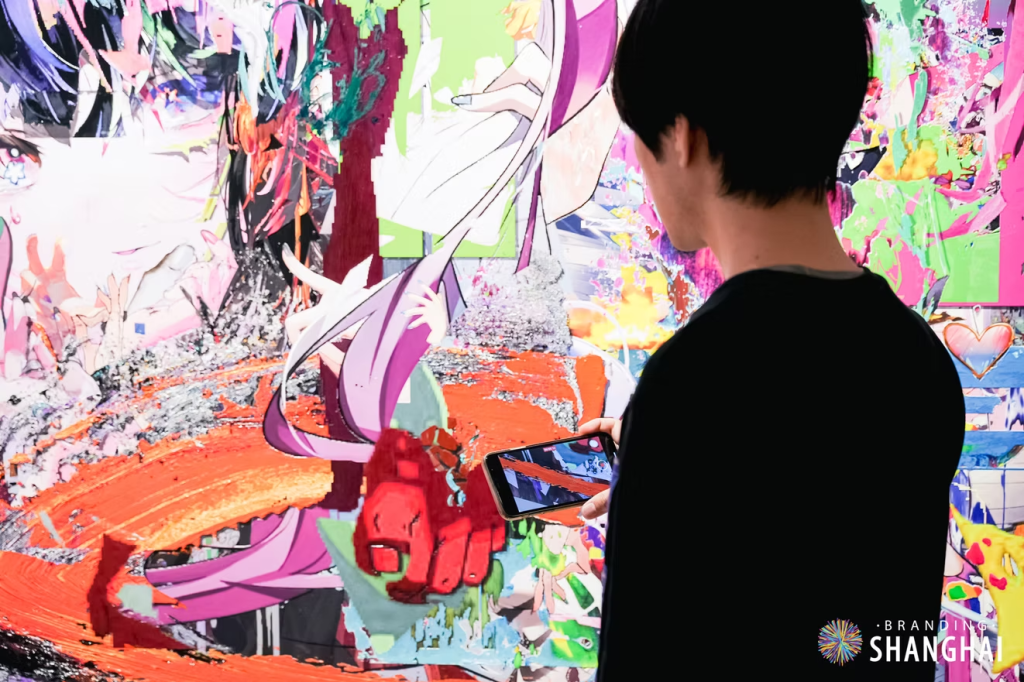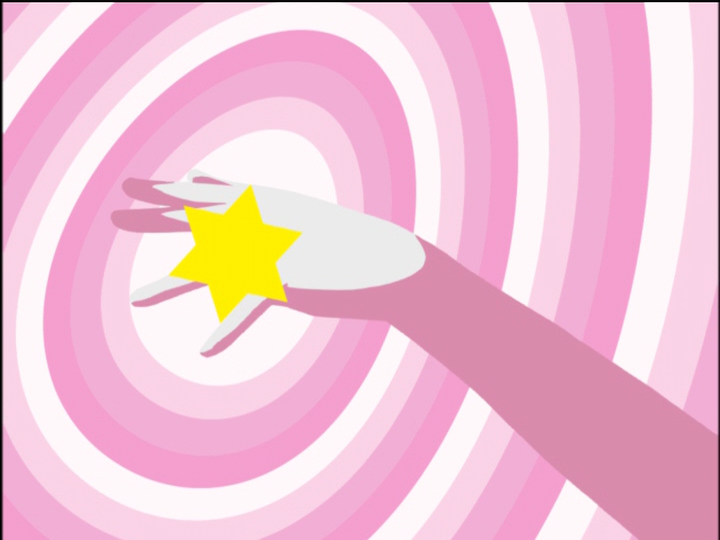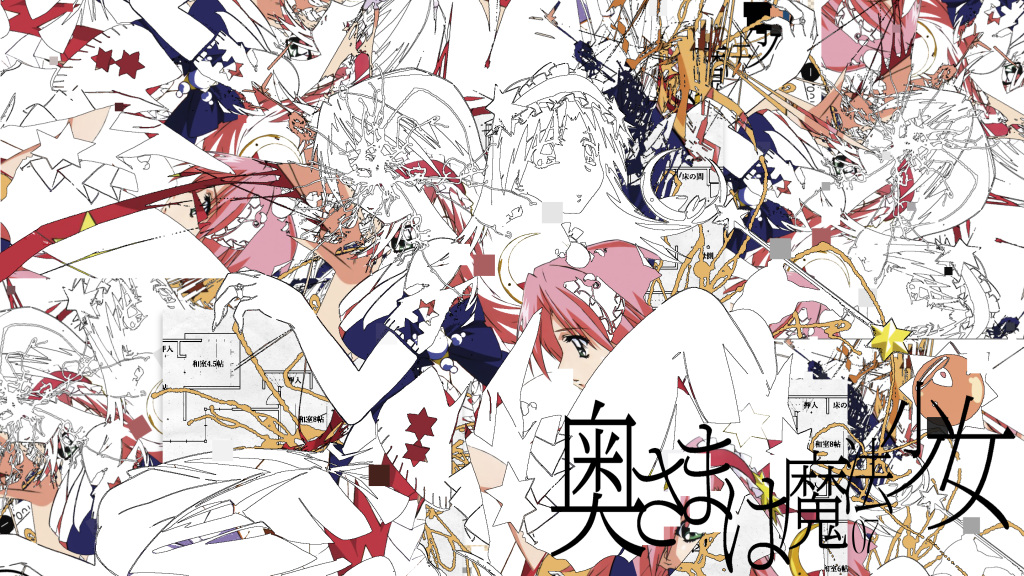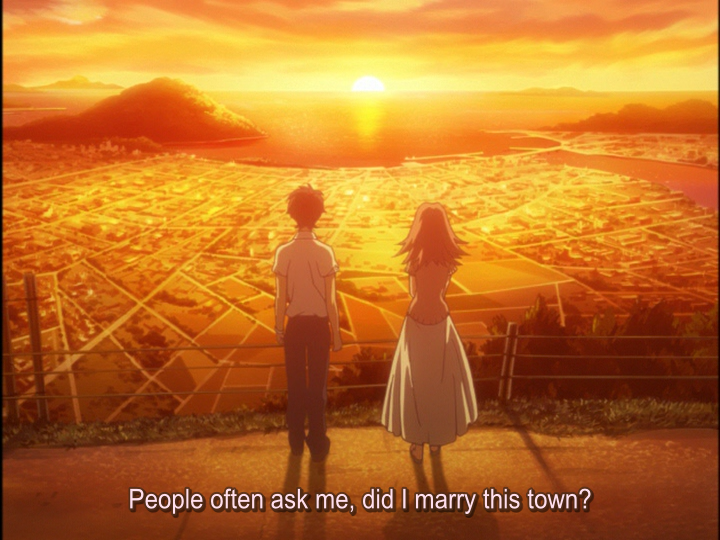Also; available on the NEW! site.
“When the Young-Girl has exhausted all artifice, there is one final artifice left for her: the renunciation of artifice. But this last one really is the final one.”
“それが魔女っ娘ミラクるん♪”
Man—once ridden from the limiters of survival—must find new ways to expend excess energy. Masturbation, adrenaline, pointless contraptions that exist merely to entertain (and control) follow the primordial demand for the extreme. Irrational, sickening sweets barter everything for limit testing’s sake. The things your mother couldn’t say out loud, but inherently indoctrinated within you during the atrocity of your birth.1 The foundation of desire itself.
Cars. High-speed technologies. The libidinal economy of acceleration, always in excess, always in motion. Love—or, at the very least, the raw craving for high-velocity impact—sutures itself to the drive toward progress. Can we accelerate faster? Wouldn’t this kill a man? These aren’t questions. They’re imperatives. In part, they conduce the drive to continue far into the future, limiting us from stagnation and hoping for even more, compelling us forward. The machine’s pressure gradient drives us until we meet the ends of our means—where the only possibility is a new model of extravagance.
At the end—presuming the circuits persist, forging new tramlines of speed, extracting the last reserves of force—when you are spent, when the workday exhausts itself into stillness, the impulse does not die. It metastasizes, mutates. The field ventures into new sciences, to art, into whatever can absorb its expanding entropy, until reaching critical mass.
Art, the most profane of excesses. The desire to create, to express beyond mere ritual, emerges only when our biological demands are met. Even then, invalued and unexplored disciplines of imagination are wrought with extremes, forged by the era of its own production. The finalities encapsulate a particular article of epochal make up, the basis in which succeeding growth spurts form under their biological structure. Art, the continuation of mankind’s desire for production as proclivity, is precisely an expenditure of economics. And what is art, if not the shrine to the ultimate abstract signifier—the bishoujo heroine?
the dearest person i’ve ever met

The intangible accelerations—the ones that occur not in the physical world; in the realm of desire, manifest in the flicker of a screen, in the blush of a two-dimensional heroine, in the runaway proliferation of forms and fetishes that defy the constraints of biology and morality. The anime girl—chimera—schizophrenic assemblage—the sum of aggregate affective mutations—emerges from mankind’s relentless pursuit of excess; Otaku unconsciously curate a database of affective traits engineered for maximum masturbatory efficiency—Kemonomimi, world-destroying goddesses, child prodigies, war-traumatized schoolgirls, eldritch beings conformed to the shape of a Young-Girl—The list grows endlessly, analyzing everything within the 387.44 miles of printed circuitry. A runaway arms race of attraction, where diminishing returns are no longer factored.
But power remains—concentrated, coalesced, in the sublimated ideal of the feminine body. The DNA of the cat-girls and angels, of silver-haired exchange students and mecha-piloting war orphans, occurs from the cute little idée fixe that, what if—what if the girl in my formative (catastrophic!) years was, in fact, an alien princess from a far away galaxy? But why stop there? What if she were blind? Couldn’t walk? Had lost half of her brain functions? What if her skin bruised at the faintest touch, if she achieved her frailty through the oblique of bandage wraps?
To quote Karl Andersson’s emphatically disquieting qualitative essay, I am not alone — we are alone.
The ontology of the feminine body is the site of our limit-explorations, the structure upon which we chart our patriarchal desires. A double acting character, a mirror hall of method and madness—carnal sweetness caramelized by every subject who has dared to wish upon a star. The moe point, that exquisite punctum of affect, inertia given state form. The refusal to relinquish, the compulsion to iterate, to simply keep moving in search of a becoming of the perfect extreme—the whore, the mother, the daughter, the wife2. The fetishes become grotesquely refined, the bondages exquisitely constricting—tightening, suffocating, depowering.
Markets dictate that obsolescence is not an end but a function. Out-of-date models are not to be discarded; they are disassembled, subsumed into the ever-churning system, siphoning its tradition into its current generation of machine. The original DNA preserves the nexus of ideation, the original sin flowing into its production, mutating into continuous systems of modulation and absorption.
Yet, a stalling question is raised, halting this ineffable acceleration into oblivion: “Why choose the plain girl?”

Saekano answered this question long before it was asked. Tomoya, in his attempts to create the ultimate visual novel, constructs a narrative in which the “perfect girl” serves as his central heroine. Through an inversion of market logic, it is not the bombshell, hyper-idealized woman that commands attention—it is the unremarkable girl, who becomes the locus of spectacle.
Megumi is normal, conversations with her unfold rationally; she considers Tomoya’s fixations not charming but tedious, distasteful, rude. She is neither too tall, nor too short. Her skin is smooth—reasonably so. Her body conforms, obediently, to expectation: curving where it should curve, flattening where it should flatten. Megumi is cute.
But Megumi does not dream.
Tomoya reveals that within the cast of archetypal heroines, the plain girl is not a rejection of spectacle but its most potent form. She is special precisely in her capacity to change, to become—her potentiality operating at the zero degree, where the rigidity of moe affect is transfigured into a new mode of commodification.The “plain girl” is not a subversion but the apex of contemporary anime femininity: the primal template, the ur-form from which all proliferations multiply. She is the infinite rationality of market logic sublimated into godhood—the highest articulation of commodity mysticism, the fairy-tale impossibility that femininity must forever uphold. The database of the young-girl, after all, is coded on iterability. What do you do with the Plain Young Woman? You slap her, fuck her up the ass and treat her like a boy.
Any of the impossibly-kawaii girls, no matter how grandiose their spectacle, are structured by this same mechanism. They exist in a degree of rotation, pivot points in the machinery of mass desire—bombshells and girlbosses, girlfailures and girl anythings. The structure refuses a singular characteristic that gives way to subjectivity, the defining trait has always been on their pliability, their capacity to be molded into the object of romance, of eros, of consumption. They must be marketable. They must be attainable. The cycle will continue.
Yes, the protocols expand—wider, denser, more grotesque in their viscosity, their annihilation. But between you and me, the girls will always be waiting, warmly.
Sometimes, days like this happen, right?

To continue traversing the landscape of the media apparatus—watch, with patient indifference, as the speed rail carves through nations, its trajectory preordained, its lines interwoven, its course dictated by a simple logic: speed.
Consider the careerist environment, the vast terrain in which one can only ever possibly sustain existence enough to consider spending excess currency on a silly Touhou Project plush doll. Survival is not enough and Capital knows this well: It must be optimized, refined, sublimated into productivity. The Sisyphean condition remains unchanged—the rock still needs pushing—but now, it is branded, marketable. Camus finds pleasure in the struggle, but the path is now laced with abscesses of anti-wrinkle agents and increasingly obscure fragrances. Work, toil, do anything the system has already consented you into providing—in order to reach the ticket prize. Rejoice as you accumulate electric tin can openers and flatscreen TVs—A shimmering exchange as the rock toils afar.
Capitalism consumes all—reaching beyond the material, into the subliminal, into the unconscious, extracting value from every impulse, every stray desire, consummating production into flesh. It metabolizes the absurd and the mundane alike, from the most grotesque vanities to simplest of quotidian gestures. It has no moral character, no compounding ideals, it is ambivalent in its purest form, a system with no concern beyond its subsistence and market circulation. And yet, the echoes persist. The images remain stark reminders of this omnipresent, absolute system of control that pervades us and tinges all forms of governance and education, structuring our reality while insisting on its invisibility. Work systematizes the forms of control through power dynamics between the worker and the mediator of capital, Education does not merely promote interest in thought but commodifies ideas, including subjects whose aspirations already serve Capital’s ends.3
The final magic trick (yes, the final one) is transmutation of the commodity into another—something else, something weightless, something so utterly worthless that even the highest promoters of fashion would hesitate before bidding. Trinkets, Make-up, Expensive Dinners, all wrapped in the same aesthetic of packaging. The Young-Boy, (surely, an ungendered4 concept) eyes stargazed by the CGI spectacle, recognizes that the body itself is a site of dominance and accumulation. He strives to become the figure of libidinal excess, imaginary phallus as real—the Man Who Has Everything, unshackled from the embarrassing act of being broke with a small dick.
The Young-Girl, in contrast, will aspire toward the Bombshell, the empowered entrepreneur of her own desirability, one hand in the economy, the other gripping the keys to sex, sovereignty, and mass desire itself, until her surplus value is abstracted and her use as a body-battery has depleted, insisting that the cycle continues, insisting that her potential is to be submissive, a sadomasochistic relationship where even the role of being dominated has an impossible exchange between the S&M. Because you don’t want what you want, you want what I want you to want. The Young-Girl desires the Young-Girl. The Young-Girl is the Young-Girl’s ideal.

Kanome Reina5 never gives herself; she only gives what she has, which is to say the array of qualities that THEY loan her. This is also why it is not possible to love Kanome Reina, but only to consume her.
Home & Away in capitalist society, autoconsumers are born—perfect, escalating models of production and citizenship.The reason for, and the way hyperreal fixations on acontextual moe points come into being—this love, like no other—you existed for this love, and this love is just autism for two.
Personal subjectivities, sullied by the nature of our current age, are not only manufactured into recursive loops promoting the system it functions under, but are, in of themselves, their own marketing strategies. A place where even active rebellion is absolutely adorable. All that is cool melts into something unserious. The question of lack, of desire, of want and absence—is erased entirely when subjectivity is flattened, folded, and made to fit in the glovebox of a drop-top car.
The way we engage with the franchised fictional world mirrors how we, as consumers, are understood. Take, for instance, the curation of profiles in online spaces. You kneel before this invisible other, crafting something that represents the “true” expression of your ideals, your desires, your needs. But in the end, the space you carve out for yourself is nothing more than a string of text, better suited for the purchasing of a horse, somehow more entwined with corporate bureaucracy than anything a LinkedIn web developer could concoct.
And before you realize it, you begin to curate your beginnings with metadata and your ends with copyright. The anime girl profile picture is more real than any IRL identity you hold to yourself.
The protocols in excess’ festivities aim for the jugular—glistening with the plastic of artificiality, a process both euphoric and self-nullifying. (because how else would it work?)
Tiqqun’s Preliminary Materials for a Theory of the Young-Girl renders visible an invisible war—not with warheads on foreheads, but with pixels, commodities, and affective labor. The Young-Girl is not a demographic; she is a virus disseminated through memes, an algorithmic ghost shaping subjectivity itself into a marketable plush.
It is a text of exposure rather than prescription, an autopsy of bodies still in motion—still becoming Young-Girls. In a world where Simulacra reigns Supreme, the Young-Girl is both the subject and object, idol and otaku, consuming herself in an ouroboros of desire—Serpent’s Benediction. Debord wasn’t pessimistic enough. Real-world crowds, street-side mediators? All absorbed, metabolized, digested. Capital doesn’t even need you to do anything, all it needs is your profile. That is, it doesn’t need (you) at all.
“That’s a scary idea. I think I get it.”
—A woman in the middle of purchasing new Jordans for her infant child. (2025)

The New Flesh is soft, pink, and delicate. You don’t even need to think about it—she’s already thought about it for you. The Young-Girl isn’t some abstract idea you can point at, a clinical diagnosis of an affliction you couldn’t possibly have—no, she’s a mirror, a mask you can’t take off.
There was only ever one possible answer, it’s always been the easiest choice. Unfurrow your brow now, dear friend.
A deafening volume pierces the ears, as a pink-colored star detonates across the sky, trailing ribbons of light, an iridescent spectacle that refuses to go unnoticed. The world stalls, glitches, stutters, caught in an error code of awe as she descends.
Agnes Bell.
The eternal maiden.
The Young-Girl, all grown up now.
I know that we were made to break.
So what? I don’t mind.

Perched on a grassy hill, we overlooked the fields, the trees, rolling farmland and a town caught in the amber light of a setting sun—its glow melting the ice that had settled deep within its streets. I thought this place was rather gauche, reminiscent of a time I thought I’d moved away from, something I assumed you would have moved on from years ago. This town never changed, it didn’t move. It only converted children into adults and adults into older adults.
You… they, we— we have all indulged in this unchanging dream for long enough. And yet, despite it all, I suppose I’m still on your side.
“I love this town. I hope you will like it too. Actually, I’m sure you will.”
You said it with such certainty. I shouldn’t have expected otherwise. You made a promise, didn’t you? To be the guardian of this land, Agnes Bell.
But things won’t always stay the same, things will change. The roles you play—the Wife, the Housekeeper, the Magical Girl—are not static conditions. Cute people (such as yourself) will always keep becoming because nobody remains who they think they were. No amount of control and power can withstand the tingling sensation under your skin, the potential you hold. Especially because—
Ureshiko Asaba, you are a fictional character who stars in a J.C. Staff production from Jul 4, 2005 to Sep 26, 2005, directed and created by Hiroshi Nishikiori often attributed to Azumanga Daioh and the anime adaptation of the index novels. You are an assemblage of adorable signs, a compilation of affective symbols engineered to produce moe, the star in a scripted event made to be consumed. Your problems, as real as they are, are not a simple occurrence of fact, but crafted intentionally to subvert the viewers in what a Mahou Shoujo series can narrate.
Agnes Bell and Ureshiko Asaba are not separate people. They are two frames of the same body, each trapped in their own cyclical dilemmas, each bound to a role within the spectacle.
As Agnes Bell, the Last Maiden, you are the sovereign of a pocket world, a single dimension, a world where magical power is absolute. The ruler dictates what the land may be the next iteration. It is a metaphor for governance, parenthood, and hegemony. Your duty is to uphold, to preserve, to keep the dream intact. A role that mirrors parenthood—shaping without force, without cruelty, without allowing bad habits to take root. Yet even as you preserve the dream, you are denied even your physiological needs. A touch. Because your role as the Magical Girl demands chastity. Your iterability is based on the exchange rate of your innocence, your power.
No Kiss.
As Ureshiko Asaba, the Plain Girl, you continue to produce labor for the Innhouse alongside your grandmother. You clean, you cook, you maintain the order within the house. You spend your time with your close friends, sometimes bickering over the eventual collapse of your own system, the conversations tinged with melancholy, an awareness that even now, as the normal woman, you are bound to your role within the spectacle. Your relationships are strained. You listlessly dream into the void, trying to retain what was left, retaining the formats that defined you.
What is there to do when your entire existence is grounded in artifice?
Even every crisis is preordained, when your anxiety is scripted, when all despair is manufactured only to be resolved within the same conditions that necessitated it? When there is nothing left to you but the “mundane life continues, and everyone is happy” mantra, a narrative prosthetic designed to weave the raw nerves of the culture industry into your very own nervous system?
I suppose one answer would be the one already chosen by you, Miss.
Your successor, or rather, the creeping of new technologies is rendered passive to the land. By your6 design, of course. Sayaka-chan is defanged, her want for rupture and equinox transmuted into a mandate for stability. A world of different magical aesthetics, the Plain Girl to The Magical Girl Who Became Plain, reduced to the most fundamental directive, to keep this world the same.
The truth is, there isn’t a clean break from the system.
And really, why should there be?
The choice you made is the same one chosen by every other Onee-san enshrined in television memory.7
Crushed by the role—saved by the very same.
The promise of happiness is right there, and you’ve earned it.
Instead of expending energy disquieted by nuclear values, I should congratulate you.
Anything less than following the script would be suicide, your character arc would be axed, assassinated—discarded like a toy. There isn’t time for questioning, no time attempting to craft something beyond the faith carved into your body, this is the time to commit to yourself knowingly.
To know, to understand why things are the way they are and to submit in spite. Not out of ignorance of the strings attached—a knowing surrender–-systems intermingle, narrative shifts do not occur while distant, they occur through channels prescribed.

A whisper of love tinges the ears still listening. The Last Maiden bows for the audience, before walking off stage, leaving room for the next actress to make her entrance; and their dreams their dreams.
Footnotes
- I’ve read a few texts about Mortology and readings that make suicide a viable option. A line that I consider a lot is a text by Hermann Burger on birth being put in front of a hostile audience without an act, naked and afraid. I, uh, I remember reading it next to a Subway. Eating a Hot Shot Italiano. ↩︎
- Um, if I may explain: the term “DaughterMommyWife” is used to describe characters that embody the synthesis mentioned earlier. It is most commonly observed within imageboard culture and Lolicon scenes online. For example, characters such as Momoka Sakurai, Kokkoro, and other youthful figures with caregiver-like qualities serve as representative examples. ↩︎
- I mean, isn’t it obvious? Hustle culture’s just another trap. They sell you this idea that if you grind hard enough, you’ll become the bombshell, the boss, the alpha but all it really does is keep you chasing power for power’s sake. Like, it’s just another game, except the only winning move is to never stop playing. ↩︎
- Tiqqun’s work often veers into a visibly reductive depiction of femininity. Ironically, they describe it as something ungendered when in reality much of the text is “ungendered” in so far that certain ruminations can be applied to anyone other than the Young-Girl. ↩︎
- Kanome Reina is… pretty. Kind of sexy, even. This happens for two reasons.
Reina is a character within a galge where she is meant to be an affectionate and adorable girl you’d want to spend time with. Her sweetness is not incidental; it is a function, a perfected algorithm of desire. Second, Reina is a model—a high schooler, childish and sweet, embodying the ideal citizen in a world where the only values are delight and compliance. ↩︎ - It’s not her choice to make, ultimately ↩︎
- Understanding the animated character of the Onee-san plays on femininity in so far that it acknowledges the roles in which a woman of presumptive power must play. The image of being bespeckled—studious—and especially wrapped up in the artifice of identity. Chiyuki Kuwayama moves forward by learning how to love the subhuman self. ↩︎
Database
- Bataille, Georges, and Robert Hurley. The Accursed Share: An Essay on General Economy. Zone Books, 1991.
- Azuma, Hiroki. Otaku: Japan’s Database Animals. University of Minnesota Press, 2009.
- TIQQUN. Preliminary Materials for a Theory of the Young-Girl. Semiotext(e) ; Distributed by MIT Press, 2012.
- Leftwich, Patrick. “Knightess of Faith to Inhuman Love.” ŠUM, www.sum.si/journal-articles/knightess-of-faith-to-inhuman-love-a-symposium-of-magical-girls. Accessed 13 Mar. 2025.
- Kraus, Chris. I Love Dick. Semiotext(e), 2006.
- Okusama wa Mahou Shoujo. Directed by Hiroshi Nishikiori, J.C.Staff, 2005.
- Saekano: How to Raise a Boring Girlfriend. Directed by Kanta Kamei, A-1 Pictures, 2015.


Leave a Reply